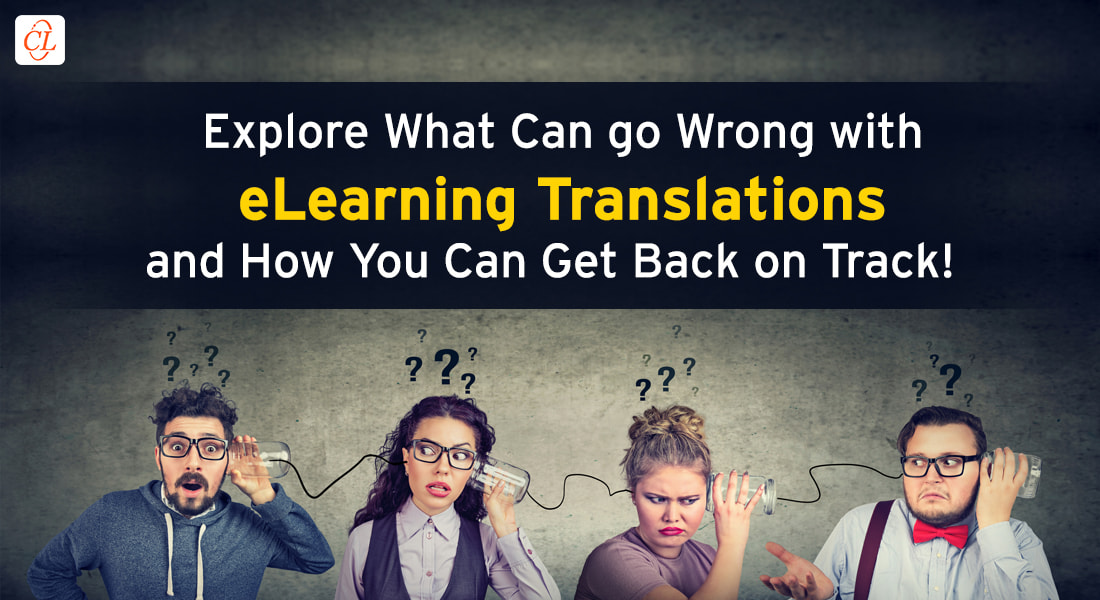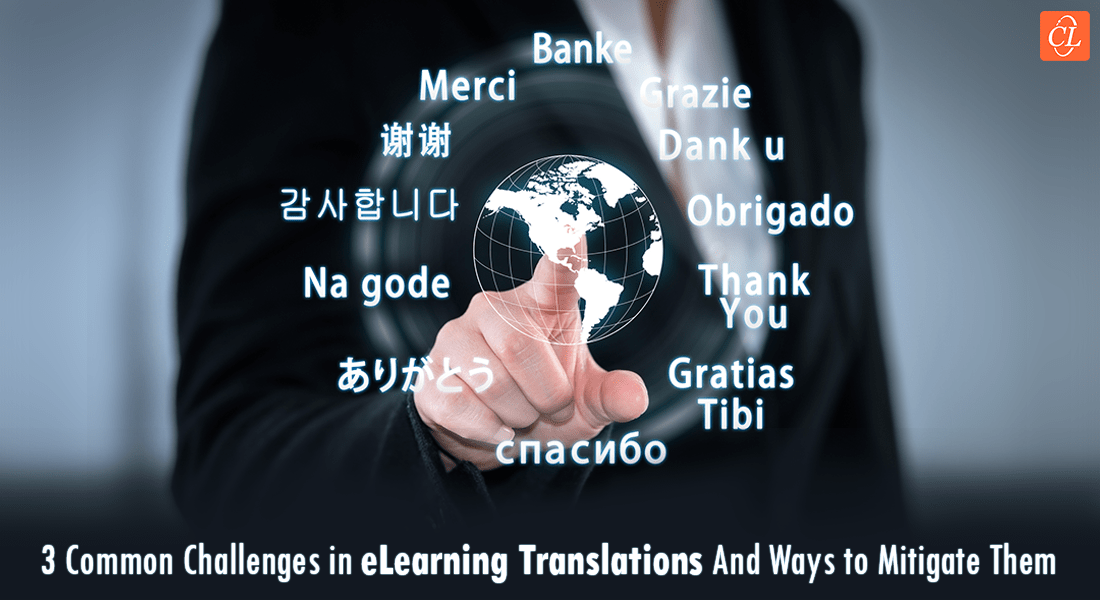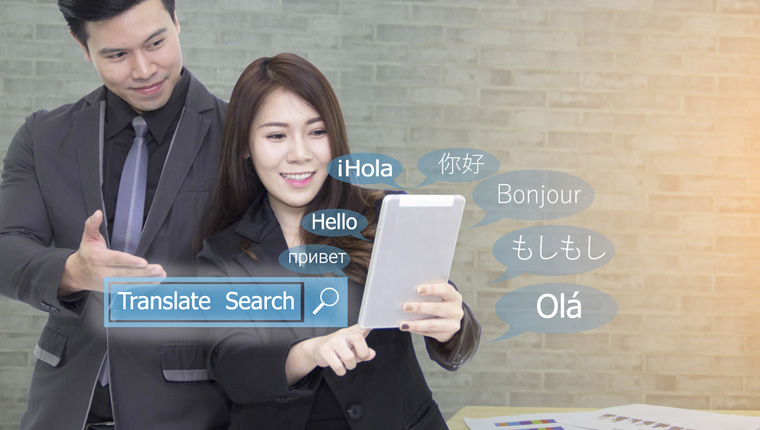eLearning Translations: Challenges and Solutions

When you create courses for an international audience, a lot of knowledge gets lost in translation. You don’t want one location of your organization to engage with the content, yet all others don’t get involved, only because of a language barrier, right? So, to avoid such handicaps, you need to turn to eLearning translation!
Let’s say you’ve designed a course in a language that a section of your learners don’t understand. What do you do? You must translate the information! In this blog, let’s discuss what eLearning translation is, the problems course designers might face when translating content, and how to resolve them!
Are You Planning to Translate eLearning Courses For Your Global Workforce?
Let’s look at the distinct challenges and their solutions here:
- Are you facing problems when translating the essence of a language? You can solve this problem by engaging native speakers and translators.
- Cultural misappropriation can be a big issue, especially when using multimedia. To avoid cultural insensitivity, you should use neutral and localized images.
- Translated scripts are difficult to design, and narrators should be able to deliver perfect tonality. You must partner with a translation expert to solve this issue.
Read on to find out more on its challenges and solutions!
What Is eLearning Translation and Why Do You Need It?
The term eLearning Translation is self-explanatory – it is the practice of translating eLearning courses from one language to another.
However, regardless of the kind, of course, you’re designing and translating, you’ll need to do much more than just translate text. You’ll also need to use culturally appropriate images and ensure that the translation fits right into the design.
Sounds like a lot of work, right? So why translate, or why does anyone undertake courses in languages foreign to them? Well, there are several reasons for both. They are:
Broader Learning Scope
eLearning translation increases everyone’s global learning scope. Organizations also get to train their global employees in a uniform manner through translated courses.
Bigger Curriculum
You might not need a new curriculum to work with. However, you can always add additional information to courses in different languages.
Better Training for MNCs
One of the biggest problems transnational or multinational companies face is training all their employees across the globe homogeneously. They need the same course in multiple languages to accommodate their linguistically diversified workforce.
Here’s how eLearning translation helps cross-cultural eLearning
Challenges to eLearning Translation and its Solutions
As mentioned before, eLearning translation is more than just translating content from one language to another. There’s much work that goes into the process, and it comes with its own set of complications. In this section, I’ll outline the obstacles you might face when translating online learning content. And don’t worry! You’ll also find solutions to these intricacies!
Translating the Essence
Translation works best when you capture the essence of the original work and produce it in the translated content. While some eLearning courses might not have a cultural essence, to begin with, there are some that do, and these nuances are worth preserving.
However, the cultural essence of the text will surely seep into the translation in the form of idioms, similes, metaphors, and other figures of speech. This can lead to the entire course sounding different because of words being misinterpreted, leaving a significant gap in the eLearning content.
Solution
There are two solutions to this problem:
- Engage translators with the original content but in their native language and make sure the translator has significant expertise in the language of the translated course. This way, they gain knowledge of its essence, and they help preserve cultural contexts.
- Read the text with a fine-tooth comb. The translator must pick up minute details from the text and make sense of it within set cultural parameters.
Cultural Sensitivity
Language is not just a combination of words but a culmination of the culture and people that communicates with it. Therefore, several eLearning translation projects end up being culturally inappropriate with images or idioms added in carelessly.
Maintaining cultural sensitivity is extremely important as that’s a means to work towards shared global knowledge?
Solution
You could avoid this challenge by using neutral media in your eLearning translation project. To build courses that are culturally relevant, you can both localize and ensure they are relevant to your company’s regions of operation. This means that you should translate courses with media, words, icons, and accent suited for specific locales and international areas of operation, depending on the course.
Make certain that you use appropriate idioms and phrases that your target learners can understand. The best way to localize content is by hiring a professional translator or a native speaker and using terminology common to your clients.
Working with Scripts
Voiceovers are normally used to add interactive elements and improve comprehension. However, several eLearning courses might also include technical knowledge that only experts can translate.
Adding voiceovers are not as simple as they seem, because what might be a 3-word sentence in one language might end up being a 10-word sentence in the other. Therefore, it’s difficult to ensure a steady pace for amenable synchronization between audio and video content.
You also need to make certain that the narrator is comprehensible and tone-appropriate for the target learner.
Solution
Solutions to the challenge when working with scripts include:
- Translating whatever you can and contacting SMEs so that both you and they save time lost in going back and forth. You will need an eLearning translation partner that showcases clarity in diction and pays attention to their words.
- Making sure that the video has enough breathing space so that the translated audio can be changed based on the reviewers’ feedback.
- With the help of an eLearning translation partner, you are also able to help the narrator get the relevant tone.
Design Formatting
An eLearning translation project is notably difficult when designing a course. Why, you ask? It’s because, often, you’ll need to translate a course and fit the output into the same design as its predecessor. After all, if you’re changing the design, you’re essentially making a new course, right?
For example, the German language has especially long words which might not fit into a course that was designed for English speakers. This way, even if your text gets translated, the eLearning course loses its aesthetic charm, defeating the purpose of creating interactive content.
Solution
The solution is simple. If you are the one who has developed the original course, then you need to incorporate enough white space in the course that caters for translative changes. However, for pre-built courses, you need to play with the typeface and typography to fit the new text right into the original design.
Multimedia
High-quality eLearning courses are not one-dimensional rather they are interactive. This means they incorporate text, audio, video, interactive elements, and images into the course’s design.
Now, to make certain the entire course is understandable to the target audience, you will need to translate everything. After all, you wouldn’t want a course that has intelligible text but incomprehensible videos, right? Translating one medium might be more complex than the other, making the translation process a cumbersome task.
Solution
Yes, translating one medium such as text might not be as complex as translating videos. However, since you must do it, it’s best to get a translation partner who has a plethora of linguistic and creative abilities. You don’t need someone who is only good with text but isn’t proficient in both the original and target languages. Also, they should possess the ability to add subtle nuances involved in translating all forms of media.
Wrapping it Up
There you have it! Here’s what you need to know about the challenges coming your way if you’re getting into eLearning translation! Now you’re better prepared to translate and design your eLearning course with the solutions to make it a cakewalk. And with this knowledge, you can design coherent courses for your learners across several countries. Is your mind still swimming with questions about eLearning translation? Don’t worry! Get this eBook now to discover all the answers to questions you might have on eLearning translation. Get started with designing courses in multiple languages today!





